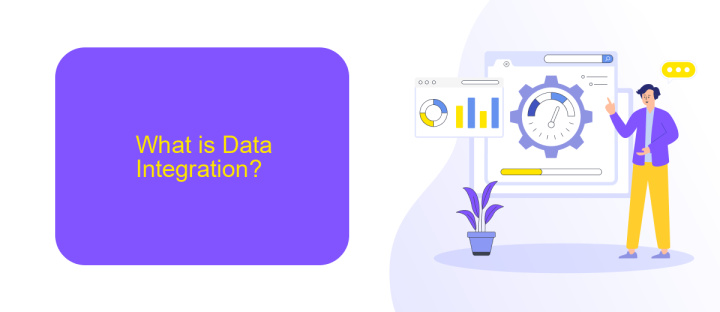Data Integration vs Data Warehousing
Data integration and data warehousing are fundamental concepts in the realm of data management. While both aim to consolidate data for better accessibility and analysis, they serve distinct purposes and involve different processes. This article explores the key differences, benefits, and use cases of data integration and data warehousing, helping organizations choose the right approach for their data strategy.
Introduction
Data integration and data warehousing are two essential components in the realm of data management. While both aim to streamline data processes and enhance accessibility, they serve distinct purposes and offer unique benefits. Understanding these differences is crucial for organizations looking to optimize their data strategies.
- Data Integration: Focuses on combining data from different sources into a unified view.
- Data Warehousing: Involves storing large volumes of data in a centralized repository for analysis and reporting.
- Tools and Services: Platforms like ApiX-Drive facilitate seamless data integration by automating workflows and connecting various applications.
Choosing between data integration and data warehousing depends on an organization's specific needs. Data integration is ideal for real-time data accessibility and operational efficiency, whereas data warehousing is best suited for historical data analysis and business intelligence. By leveraging tools like ApiX-Drive, businesses can effectively manage and utilize their data, ensuring better decision-making and operational performance.
What is Data Integration?

Data integration is the process of combining data from different sources to provide a unified view. This practice is essential in today's data-driven world, where organizations rely on diverse datasets to make informed decisions. By integrating data, businesses can ensure consistency, improve data quality, and streamline operations. This process typically involves extracting data from various sources, transforming it into a consistent format, and loading it into a centralized system or data warehouse.
One of the key challenges in data integration is managing the complexity of different data formats and structures. Tools and services like ApiX-Drive can simplify this process by automating data integration tasks. ApiX-Drive allows users to connect multiple applications and data sources seamlessly, enabling real-time data synchronization and reducing manual efforts. By leveraging such platforms, organizations can enhance their data integration capabilities, ensuring that accurate and up-to-date information is always available for analysis and decision-making.
What is Data Warehousing?

Data warehousing is a process that involves the collection, storage, and management of large volumes of data from various sources in a centralized repository. This repository, known as a data warehouse, is designed to support business intelligence activities, such as reporting, analysis, and data mining.
- Data Extraction: Gathering data from multiple heterogeneous sources.
- Data Transformation: Converting data into a consistent format.
- Data Loading: Importing the transformed data into the data warehouse.
- Data Storage: Organizing data to optimize query performance.
- Data Access: Enabling users to retrieve and analyze data efficiently.
A well-implemented data warehouse provides a unified view of an organization's data, making it easier to generate insights and support decision-making processes. Tools like ApiX-Drive can facilitate the integration of data from various sources into a data warehouse, streamlining the data extraction and transformation steps. This ensures that data is accurate, consistent, and readily available for analysis.
Key Differences Between Data Integration and Data Warehousing

Data integration and data warehousing are essential components of modern data management, but they serve distinct purposes. Data integration involves combining data from different sources to provide a unified view, while data warehousing focuses on storing and managing large volumes of data for analysis and reporting.
One key difference is in their primary objectives. Data integration aims to streamline data from various sources, making it accessible and consistent. On the other hand, data warehousing is designed to store historical data in a structured format, enabling complex queries and analysis.
- Data Integration: Combines data from multiple sources
- Data Warehousing: Stores large volumes of structured data
- Data Integration: Real-time data processing
- Data Warehousing: Batch processing of historical data
- Data Integration: Tools like ApiX-Drive facilitate seamless integration
- Data Warehousing: Uses OLAP for analytical processing
In summary, while both data integration and data warehousing are crucial for effective data management, they address different needs. Data integration focuses on real-time data accessibility and consistency, often using tools like ApiX-Drive, whereas data warehousing emphasizes efficient storage and analysis of historical data.
Conclusion
In conclusion, both Data Integration and Data Warehousing play crucial roles in modern data management strategies. Data Integration focuses on combining data from different sources to provide a unified view, facilitating real-time decision-making and operational efficiency. On the other hand, Data Warehousing involves the storage of large volumes of structured data, optimized for complex queries and historical analysis. Each approach has its own strengths and can be used complementarily to achieve comprehensive data solutions.
When implementing these strategies, tools like ApiX-Drive can significantly simplify the process. ApiX-Drive offers seamless integration capabilities, enabling businesses to connect various data sources effortlessly. This not only enhances the efficiency of data integration but also ensures that the data warehouse is populated with accurate and timely information. Ultimately, the choice between Data Integration and Data Warehousing depends on the specific needs and goals of the organization, but leveraging the right tools can make either approach more effective.
FAQ
What is the difference between Data Integration and Data Warehousing?
When should I use Data Integration instead of Data Warehousing?
Can I use both Data Integration and Data Warehousing together?
What are some common challenges in Data Integration?
How do I choose the right Data Integration tool?
Apix-Drive will help optimize business processes, save you from a lot of routine tasks and unnecessary costs for automation, attracting additional specialists. Try setting up a free test connection with ApiX-Drive and see for yourself. Now you have to think about where to invest the freed time and money!

